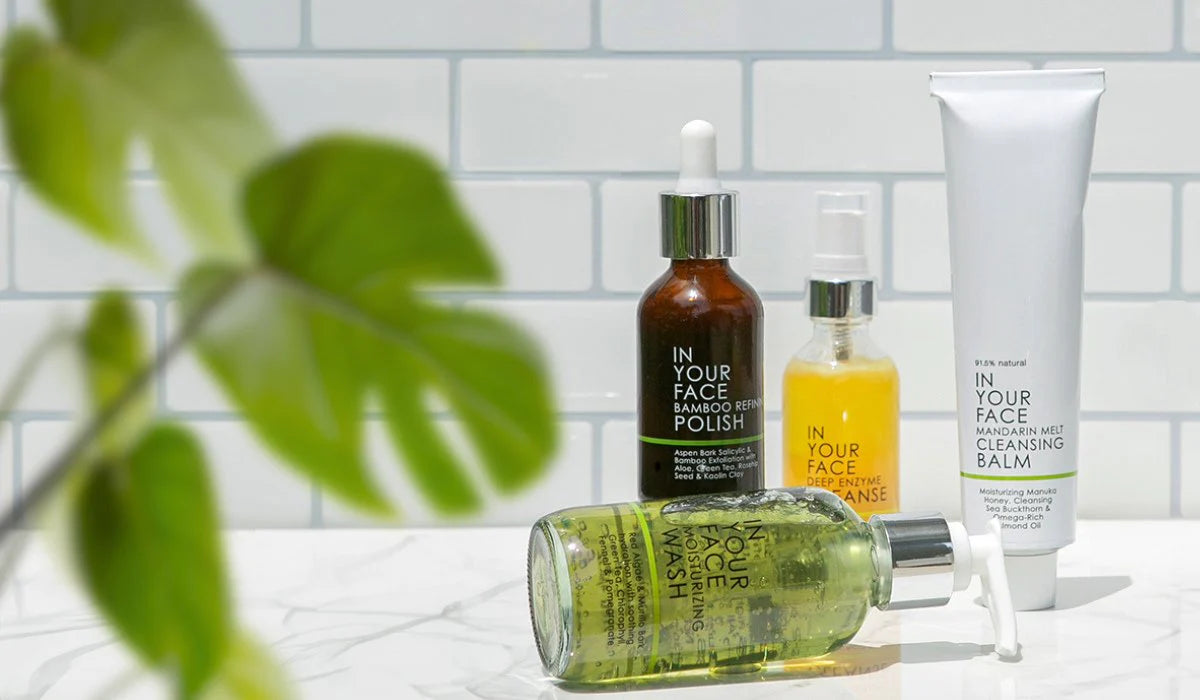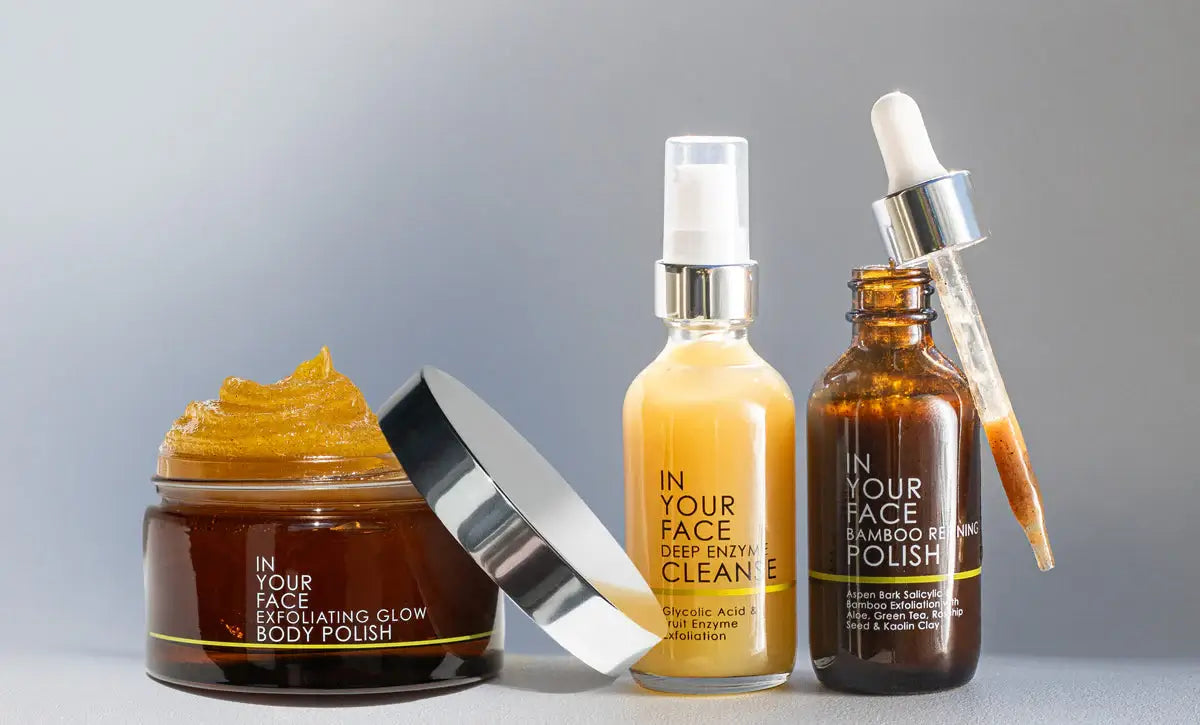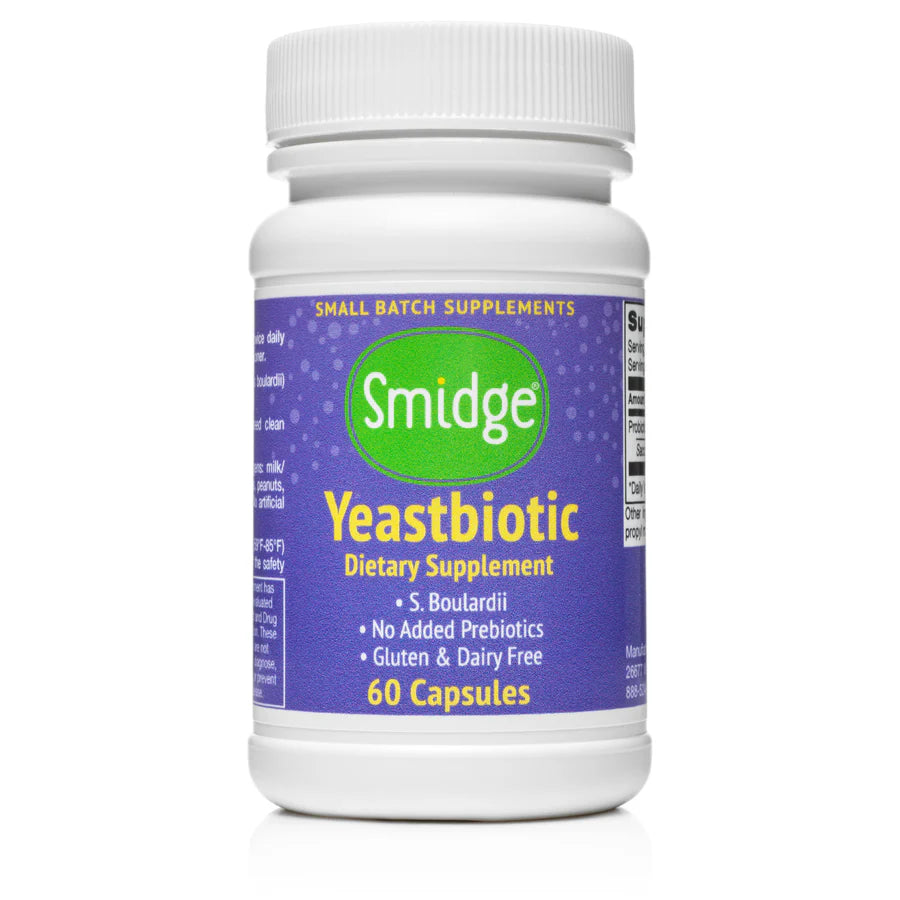
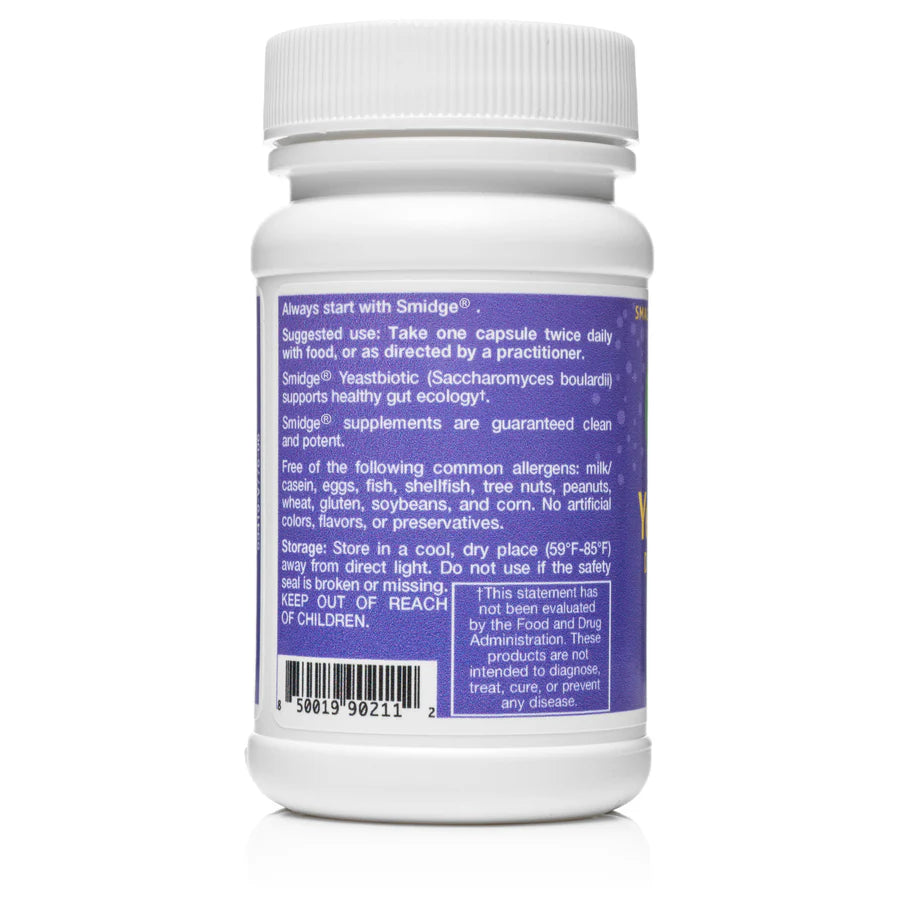
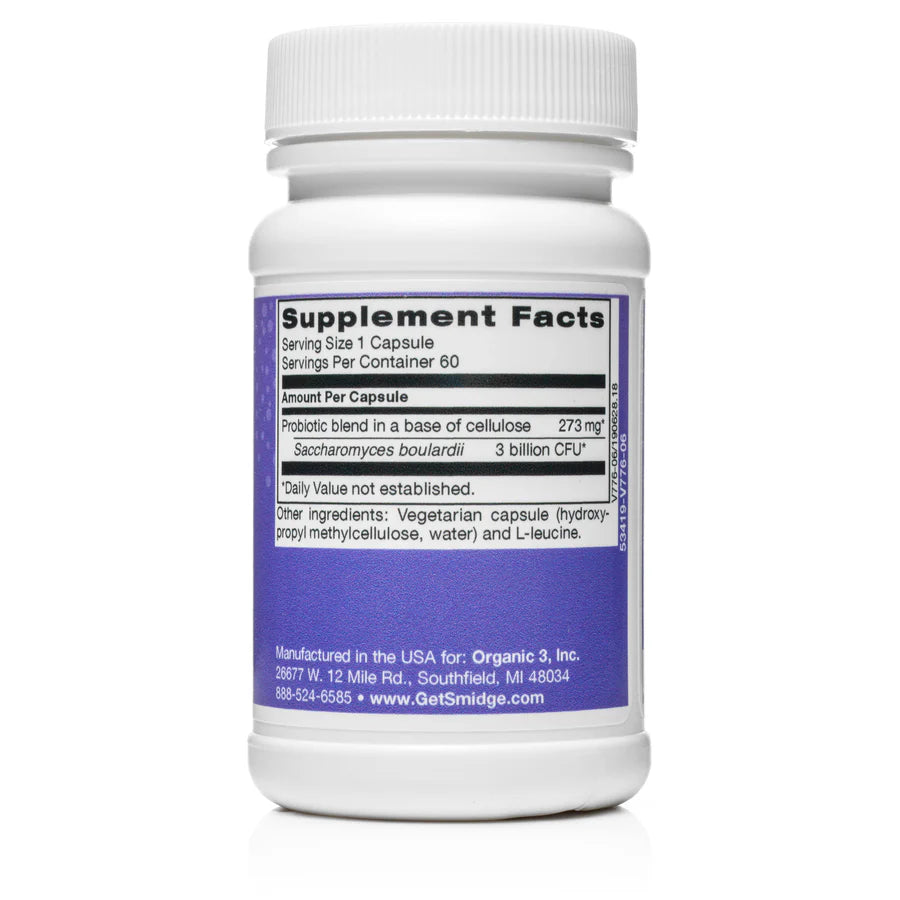
Smidge® Yeastbiotic: Your Gentle, Yeast-Based Probiotic
Discover a probiotic formulated with the powerful yeast strain Saccharomyces boulardii, designed to help you sidestep common antibiotic side effects like diarrhea, fatigue, and brain fog.* Smidge® Yeastbiotic is free from additives, dairy, gluten, and common allergens—pure and simple.
This probiotic is ideal for those managing conditions like Clostridium difficile (C. diff), candida, yeast infections, and mild skin irritations, as recommended by a healthcare practitioner.*
Smidge® Yeastbiotic Highlights:
- Made in small batches for quality.
- Free from dairy, gluten, and common allergens.
Dosage Directions
Adults: Take 1 capsule twice daily with food until the bottle is finished (See “low and slow” note below), or as directed by a certified healthcare practitioner. May be taken before, during or immediately following a course of antibiotics under the advice of your doctor. This is not intended to be a maintenance probiotic.
Our Smidge® Yeastbiotic is safe for all ages and may be taken alongside our Smidge® Probiotics.
Infants/Children/Sensitive Individuals: Yeastbiotic can be given to children by opening the capsule and giving 1/2 of the capsules on food like applesauce or yogurt.
This supplement is safe to take while Pregnant/Breastfeeding. Please be sure to reach out to your Certified Healthcare Professional about using supplements and their dosage while Pregnant or nursing.
Important Warnings: This product is not recommended for individuals with severe immunocompromised conditions or those with central venous catheters.
Low and Slow Approach
Because Smidge® supplements are pure, potent, and high-quality, it’s essential to begin with a minimal dose. For instance, start with a very small amount every other day or even weekly. Gradually increase to determine how the supplement interacts with your body and what feels optimal for you.
Taking Smidge® Yeastbiotic:
- Use alongside antibiotics, as directed by your healthcare practitioner. It’s recommended to take the probiotic at least a two hours apart from your antibiotic dose.
- After completing a round of antibiotics, continue taking Smidge® Yeastbiotic for two weeks to help repopulate your gut microbiome with benefictial bacteria.
Pro Tip: Avoid sugary foods that can feed pathogenic yeast to maximize the probiotic’s efficacy. Many customers report success with ancestral diets like SCD or paleo, which include beneficial fatty acids.
Note:
If an allergic reaction occurs, it is not likely that it is because you are allergic to the probiotic, but rather because it is a little too potent for you. Please follow these steps:
- Take 1/2 dose every three days until your body becomes well adapted to it (we suggest two weeks).
- Take 1/2 dose every two days until your body becomes well adapted to it (we suggest two weeks)
- Take 1/2 dose daily until your body becomes well adapted to it (we suggest two weeks) then slowly increase it to a full dose.
Storage
Store Smidge® Yeastbiotic in a cool, dry place. For long-term storage, refrigeration is recommended.
Choose options



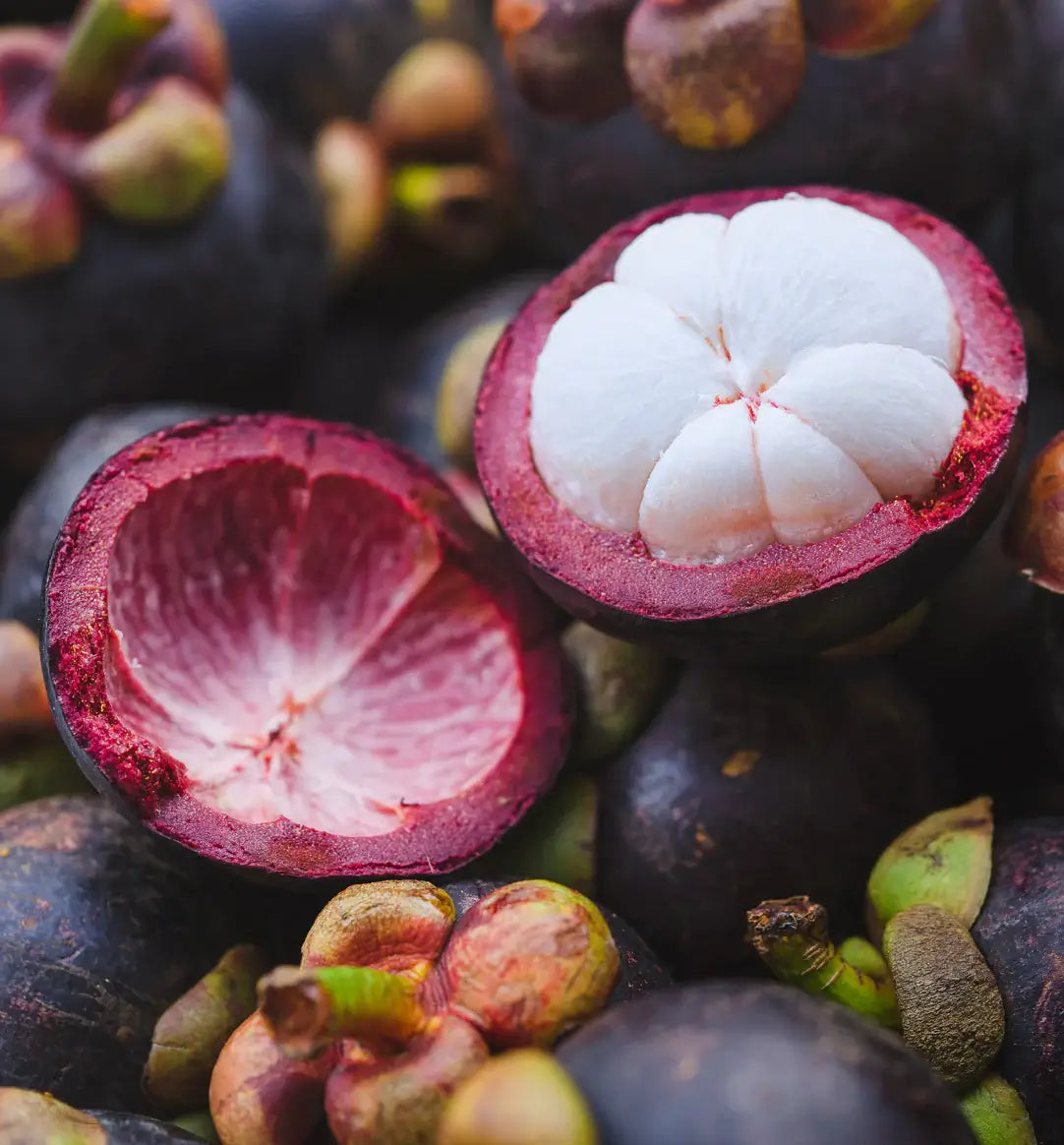
Sourcing and crafting Yeastbiotic
We meticulously source the Saccharomyces boulardii in Yeastbiotic to ensure purity, quality and effectiveness. This probiotic yeast — known for its ability to target pathogens in the gut and resilience through digestion — is derived from carefully selected strains initially found in nature, such as mangosteen peel and lychee fruit. While its origins grow from the earth, the strain is from a trusted bank to ensure a clean, controlled foundation.
We cultivate our isolated strain of S. boulardii with precision and care in a nutrient-rich environment that maximizes its growth. Then, it’s gently freeze-dried for potency. Each small batch undergoes thorough testing for viability.
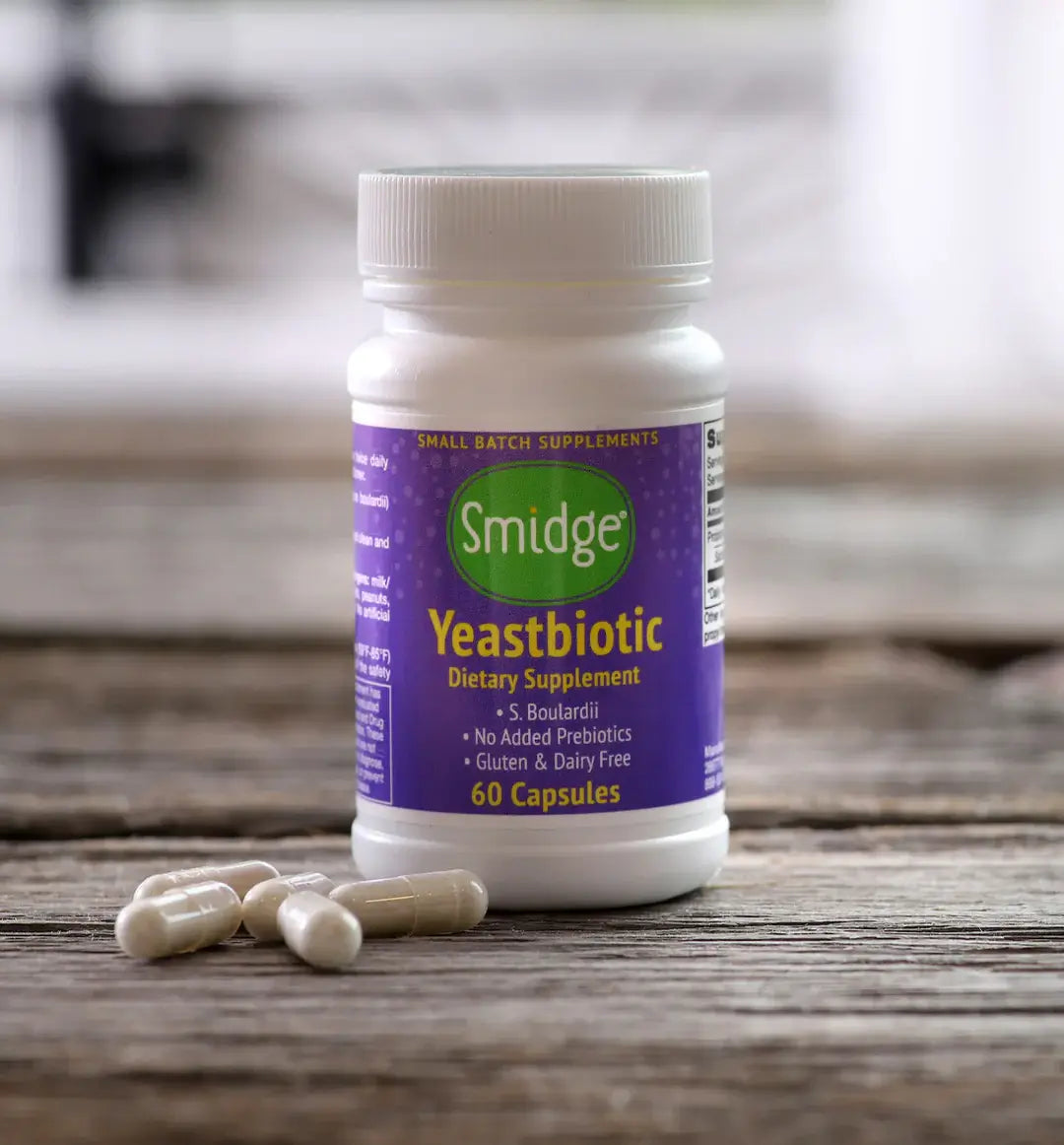
For antibiotics, candida issues, and more*
Each capsule contains pure S. boulardii, well-known for balancing candida issues. (Some supplement manufacturers substitute brewer's or baker's yeast for S. boulardii. Not Smidge®!)
You can take this saccharomyces boulardii probiotic supplement with your antibiotics (as guided by your healthcare provider), as it may not compromise the potency or effectiveness of the antibiotics.* So both can do their crucial jobs while you're on the mend.*
And even if you're not on antibiotics, Smidge® Yeastbiotic can nourish your digestive system. Our customers tell us they often take it while following natural interventions, such as special diets for candida or other mild fungal overgrowths.*

How does S. bouldardii work in the body?
Antibiotics will only attack bacteria, not yeast. People often have issues when on antibiotics, as they wipe out "good bacteria." And candida that has been lying dormant will take over along with an array of other unpleasant side effects.
S. boulardii, the friendly yeast strain found in Smidge® Yeastbiotic, may prevent and treat diarrhea caused by antibiotics.* It does this by gently crowding out troublesome microbes in the gut and augmenting the intestinal absorption of D-glucose and sodium, which may enhance the uptake of water and electrolytes during occasional diarrhea.*
S. boulardii may help with the fatigue and brain fog often caused by antibiotics, too.

More S. boulardii health benefits
S. boulardii can do an enormous amount of work to keep you feeling good.*
Studies show S. boulardii:
- Supports intestinal health and the microbiome*
- Preserves intestinal barrier function*
- Supports the immune system*
- May inhibit pathogenic yeast related to candida issues*
- May have broad antimicrobial activities against Clostridium difficile (C. diff), E. coli and other gastrointestinal pathogens*
- Avoids nausea related to low stomach acid, and may ease mild acid reflux*
That's why many doctors and practitioners turn to this helpful yeast when antibiotics have thrown everything out of whack.*

S. boulardii, candida and women’s health
Because S. boulardii has been shown to inhibit pathogenic yeast related to candida issues, women may take it to balance pH levels related to yeast infections and bacterial vaginosis.* And, it may help with mild skin issues related to candida, like rashes and acne caused by yeast sensitivity.*

Yeastbiotic while traveling
Yeastbiotic is also fantastic for travel, because it may keep some pathogens out of the gut, helping to stave off travelers’ diarrhea.* It may also help avoid an upset stomach and maintain regularity while on the go and experiencing different food and water.*
What is in Smidge® Yeastbiotic?
S. boulardii is a non-pathogenic, transient yeast long used to support normal bowel transit time.* Originally found on the skins of lychee, grapes and mangosteen fruits, S. boulardii has been used to help people balance their digestive systems for decades. Many randomized clinical studies show S. boulardii to be a useful probiotic, including treating mild antibiotic-associated diarrhea, C. diff, systemic candida overgrowth, traveler’s diarrhea and other inflammatory bowel conditions.*
Microcrystalline cellulose is all-natural refined wood pulp. We chose this ingredient to satisfy the needs of our most sensitive customers.
Hydroxypropyl methylcellulose (HPMC), water. Our vegetable (vegan) capsules consist of only two ingredients: HPMC and purified water. HPMC is derived from vegetable cellulose of pine. These capsules contain no preservatives, no gelatin, wheat, animal by-products or starch.
Need help?
Frequently Asked Questions
There are many reasons. Here are just a few to run by a certified healthcare practitioner:
- You may be taking antibiotics and want to avoid any bothersome side effects like diarrhea, yeast issues, fatigue and brain fog.*
- You may be searching for a solution to mild, periodic IBS and other inflammatory bowel conditions*
- You received a recommendation from a trusted practitioner for issues like candida or C. diff.*
- You want to support your digestive health.*
It's free of the following common allergens: does not include milk/casein, eggs, fish, shellfish, tree nuts, corn, peanuts, wheat/gluten or soybeans.
Yeastbiotic is SCD compliant and can be used to treat diarrhea or other antibiotic-related problems stemming from systemic yeast overgrowth, under the guidance of a qualified healthcare practitioner.*
You will see that your Yeastbiotic capsules have small flecks of brown in them. The friendly yeast strain is the brown color, while the cellulose (the benign filler necessary for encapsulation) is white. Please know the color variation is entirely normal and a characteristic of the formula.
Sure thing. Yeastbiotic works great with our probiotics. Together, they can help balance the bacteria in your digestive system affected by antibiotics.
At the same time, therapeutic probiotics like our Sensitive Probiotic may intensify Yeastbiotic’s effectiveness. So, if you’re experiencing discomfort due to excessive yeast die-off, lower your Yeastbiotic dose. You can further lower by pulling apart the capsule and taking a portion of the powder (the powder will appear white with brown specs).
We recommend our customers take this one as needed (and until the bottle is finished), as it works better in bursts rather than long-term. This is because pathogenic yeast is very resilient and can become resistant to particular strains or even antifungal treatments.*
Equally as important, this supplement is most effective when taken while abstaining from sugary foods that feed pathogenic yeast (i.e. cookies + yeast = no bueno). Many of our customers consume ancestral diets (such as SCD or paleo) that include essential fatty acids, and take a quality digestive enzyme.
The strains in our Yeastbiotic capsules are sourced in the U.S., as is the production of the final product :)
Yeastbiotic lets your antibiotics do their thing. You can take it while taking antibiotics (under your doctor’s advice), because antibiotics should not interfere with S. boulardii's potency or effectiveness and vice versa.*
Probiotics have become the go-to ally for getting your digestive system back on track and maintaining good health. But when you're taking antibiotics, these helpful bacteria can be helpless. Antibiotics wipe out the good and bad bacteria indiscriminately. Yet antibiotics will only attack bacteria, not yeast. So you can take Smidge® Yeastbiotic while you're taking antibiotics (under the advice of your doctor), because antibiotics don't interfere with S. boulardii's potency or effectiveness and vice versa.*
Great question! Smidge® Yeastbiotic is a yeast that happens to function like a probiotic in the body (so it's both!).
History lesson! The French scientist Henry Boulard first discovered S. boulardii in 1920 after observing that certain locals in Indonesia were not succumbing to an outbreak of cholera. The healthier locals drank tea made from the skins of lychee and mangosteen, from which Boulard was able to isolate S. boulardii as the protective yeast. The strain has been named after him ever since its discovery.
We recommend working with your diet and abstaining from sugar or other processed foods that feed yeast and other pathogens. Customers often consume ancestral diets (such as SCD or paleo) that include essential fatty acids.

